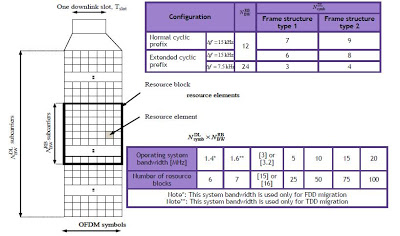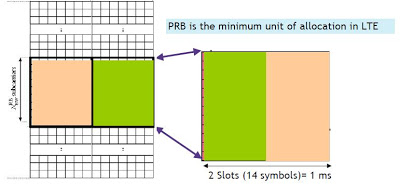Resource Block & Physical Resource Block in LTE
What is Resource block in lte? :- A resource block is the smallest unit of resources which allocated to a user. The resource block is 1 slot long in time and 180 kHz wide in frequency.
Resource Block

Multiplex multiple users both in time and frequency, together with pilots and control signals.
The time-frequency plane is divided into chunks=minimum resource allocation unit.
The traffic multiplexing is performed by allocating to each user a certain number of chunks depending on its data rate/geometry.
Physical Resource Block

In OFDMA, users are allocated a specific number of subcarriers for a predetermined amount of time.
These are referred to as physical resource blocks (PRBs) in the LTE specifications.
PRBs thus have both a time and frequency dimension. Allocation of PRBs is handled by a scheduling function at the 3GPP base station (eNodeB).
UPLINK:- FDD and TDD uplink transmissions have the same physical channels and signals.
The main difference is that TDD frames include a special subframe and its part which can be used for SRS and PRACH for uplink transmissions.
Modulation
in uplink data signals (PUSCH) LTE standard uses SC-FDMA (Single Carrier Frequency Division Multiple Access) modulation, which has a lower cost amplifiers and less power usage means lower peak-to-average power ratio.
TDD
In TDD mode occupy the same frequency spectrum but are separated in time for uplink and downlink transmissions .
Uplink users transmit subframes, random-access requests (PRACH) and SRS during the UpPTS section of the special subframe.
FDD
The uplink FDD frame contains only uplink user transmissions and is same length as the downlink frame.